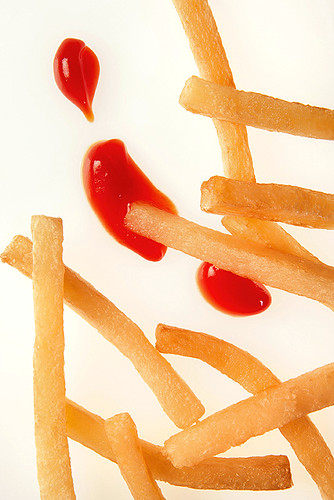
This post is part of the Science Tuesday feature series on the USDA blog. Check back each week as we showcase stories and news from the USDA’s rich science and research portfolio.
All month long, USDA will highlight how employees and agencies in many different disciplines and agencies all work together with the common goal of Building a Healthier Next Generation. So this seems like the right time to take a quick look back at some of the ways the four agencies that make up USDA’s Office of Research, Education and Economics are helping improve mealtime for your family.
Yogurt has been in the news a lot lately, and many of you reach for it as a healthy snack. But what if we could make something that is already a smart choice even better? If you are a regular reader of our Science Tuesday blog, you already know that the USDA’s Agricultural Research Service (ARS) scientists have found a way to make a healthy snack even better for you by adding fiber. They’ve added very small amounts (about a quarter-teaspoon’s worth) of a fiber-rich component of oats called beta-glucan to 8-ounce servings of low-fat yogurt without noticeably affecting key characteristics such as the yogurt’s thick, creamy texture that many of us love.
As difficult as it is to eat well at home, it can be even more of a challenge when eating out. USDA’s Economic Research Service (ERS) noted that Americans, on average, get 32 percent of their calories from foods ordered from restaurants, fast food places, and other away-from-home sources. ERS compared the nutritional quality of at-home with away-from-home foods, and compared data from Federal surveys conducted in 1977-78 and in 2005-08. The surveys reported types and amounts of foods eaten and from which sources. The recent survey indicates healthy eating out may be a challenge, but there is good news in a recent ERS report shows that American adults are eating better and making better use of available nutrition information in their dietary choices.
ARS research may help make good choices easier with research into a lower-fat french fry that could allow you to enjoy a fried potato treat with fewer calories and the technique to achieve that is more environmentally friendly than conventional fry preparation. Using infrared heat to blanch the potato strips before frying results in tasty fries, less oil absorbed by the potato and could allow processors to eliminate the need to air-dry the potato strips, so processors who opt for the IR method could reduce their water use and maybe their energy bills, too.
And last year a group of federal agencies restarted the Interagency Committee on Human Nutrition Research (ICHNR), co-chaired by Dr. Catherine Woteki, USDA Chief Scientist and Under Secretary for Research, Education and Economics, and Dr. Howard Koh, Assistant Secretary for Health in the Department of Health and Human Services. The committee was chartered in 1983 and was reestablished last year. The ICHNR is enhancing the coordination of Federal agencies engaged in nutrition research to help ensure that you and other Americans benefit from focused, strategic human nutrition research. With clear information and guidance, the ICHNR will help all Americans to create a healthier future for themselves and their families.

